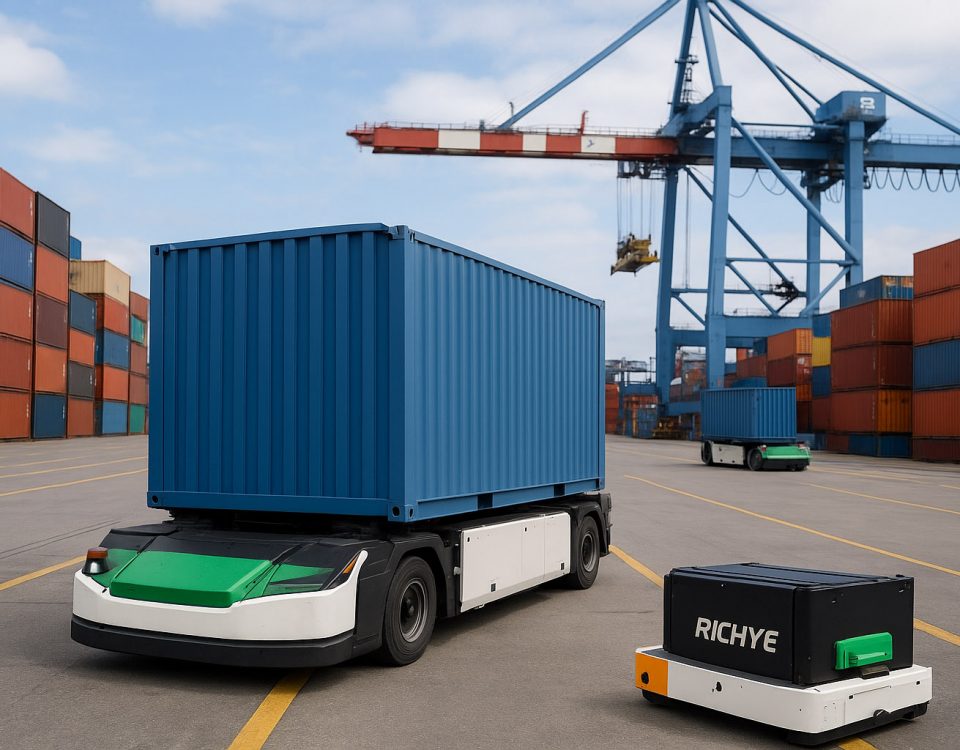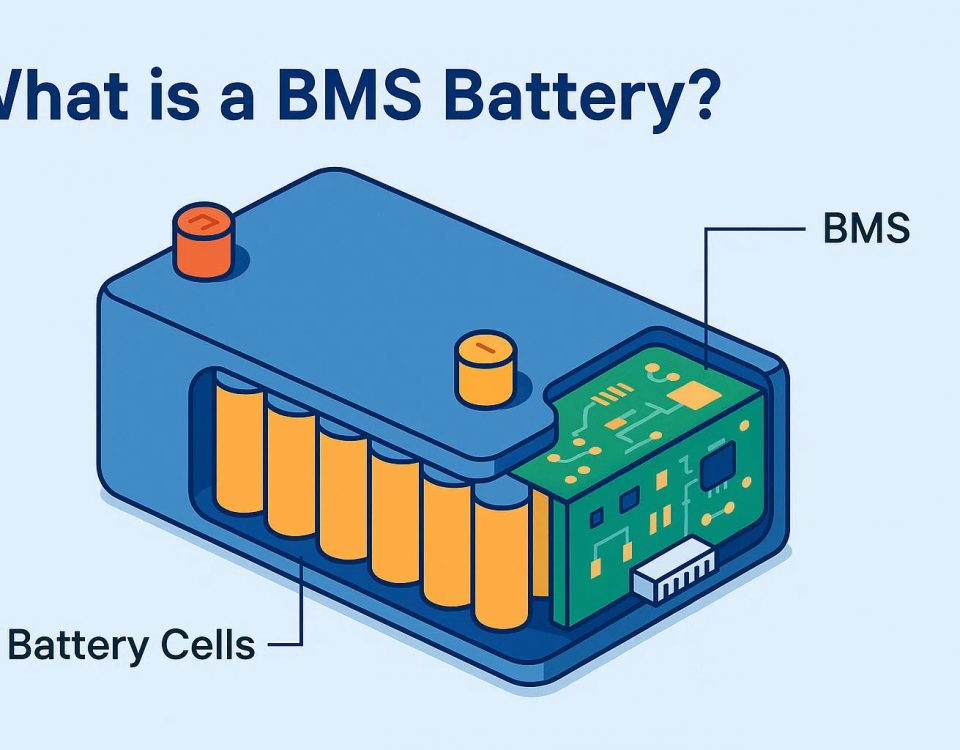The logistics industry is entering a decisive decade. As e-commerce expectations continue to compress delivery windows and warehouse operations demand ever-higher throughput and accuracy, automation is no longer an optional efficiency play — it has become a strategic necessity. At the heart of that transition are veicoli a guida autonoma (AGVs) and autonomous mobile robots (AMRs): flexible, scalable movers whose performance and operating cost are tightly coupled to one component often treated as commodity — the battery. This article examines how current battery technology supports automation, why companies should treat battery strategy as a business decision (not a technical footnote), and how to select manufacturing partners who will protect throughput, margins, and uptime.
Why batteries matter for warehouse automation
AGVs/AMRs are defined by operational parameters that batteries directly determine: run time, peak power for acceleration and lifts, duty cycles (how often they must charge or swap), and the practical uptime available during a shift. Modern lithium-based chemistries — especially LiFePO₄ and other lithium ion variants designed for industrial use — deliver the energy density, deep-cycle life and integrated battery-management systems (BMS) that make continuous, high-duty AGV fleets feasible. Product lines and pack configurations targeted at material handling commonly show voltages in the 36–96 V range and capacities sized specifically for vehicle platforms, with BMS, high discharge ratings and rack or pack form factors built for industrial fitment.
Beyond raw energy and power, two battery features are decisive for operators: cycle life and charge strategy. Industrial LiFePO₄ packs designed for telecom or material-handling applications advertise several thousand cycles at practical depths of discharge — a characteristic that reduces replacement frequency and lowers total cost of ownership (TCO) compared with older lead-acid alternatives. At the same time, the choice between opportunity charging, fast charging, and battery swapping materially affects both system architecture and labor requirements; each approach shifts costs between infrastructure, battery count per vehicle, and maintenance.
Business case: when automation pays — and where batteries tip the balance
For commercial decision-makers, the automation question is ultimately a financial one: will the investment deliver higher throughput, lower operating cost, and better customer satisfaction than continuing with manual or semi-automated processes? Key levers include:
• Labor savings and redeployment: Replacing repetitive material-movement tasks with AGVs reduces direct labor hours and redeploys workers to higher-value work (quality control, exception handling).
• Throughput and accuracy gains: Synchronized robotic fleets reduce cycle times and errors, improving order-fulfillment rates and lowering cost per order.
• Asset utilization: Better use of racking, denser layouts and smoother traffic flow improve cubic throughput — often the largest lever on revenue per square foot.
Where batteries become pivotal is in converting technical gains to predictable financial returns. A fleet that requires frequent battery swaps or long recharge windows forces additional capital (spare battery inventory) or labor (swap crews or manual recharging), reducing the net benefit. Conversely, higher-cycle, fast-charging packs reduce spare inventory and can enable continuous operation with opportunity charging strategies that fit shift patterns. When planners model ROI, battery TCO should be included alongside vehicle cost, integration, and software. Realistic models factor:
• Battery lifespan in cycles and calendar years (influences replacement cadence).
• Effective energy delivered per shift (how many kilometers/moves per charge).
• Infrastructure costs (charging stations, power upgrades, swap racks).
• Failure and warranty costs (downtime, replacement, RMA logistics).
Because modern LiFePO₄ packs may deliver thousands of cycles at practical DODs, their lower lifecycle cost frequently justifies a higher up-front price when compared to lead-acid alternatives — especially in high-utilization fleets where batteries run multiple times per shift.
Choosing a battery manufacturing partner: criteria that protect margin and uptime
Selecting a reliable battery partner is not just an engineering choice; it is a procurement and operations decision with direct financial consequences. Consider the following checklist when evaluating suppliers:
-
Technical fit & customization capability — Can the vendor deliver packs in the voltages, dimensions and peak-current ratings your vehicles require? Do they offer BMS customization, CAN/J1939 or other fleet telemetry integration, and packaging suited to your vehicles?
-
Proven cycle life & test data — Ask for validated cycle-life results at your target depth-of-discharge and charge rates. Product claims backed by test matrices (e.g., 3,000–8,000 cycles at specified DOD) are far more useful than vague “long life” statements.
-
Safety standards & certifications — Industrial deployments should insist on UL/IEC safety certifications and documented thermal management strategies. Certifications aren’t optional when you scale: they materially affect insurance, permitting and integration risk.
-
Service, warranty & replacement logistics — Prefer suppliers who guarantee lead times, offer local service or depot exchange, and provide clear RMA/workflow SLAs. Downtime is costly; warranty language should be explicit about cycle thresholds and degradation.
-
Total cost of ownership transparency — Ask vendors to model TCO for your fleet scenarios (number of spare packs, expected cycles, charging strategy). The best partners will co-build a TCO model rather than simply quoting a price per kWh.
-
Supply chain resilience & scalability — Confirm the supplier’s capacity to scale with you, their component sourcing risk, and contingency plans for surge orders. In multi-site rollouts, consistent pack configuration and firmware compatibility matter.
-
Data & integration support — Battery telemetry must feed into fleet management and facility energy systems. Vendors that support remote firmware management, fleet diagnostics and energy-use reporting reduce integration work and speed troubleshooting.
Treat procurement as a multi-stage process: lab and vehicle trials → pilot fleet in a constrained environment → scaled rollout. Include contractual milestones tied to measured performance (run time, cycle life, warranty response) so vendors share in deployment risk.
Practical deployment patterns and where batteries influence design
Three common fleet architectures demonstrate how battery choice shapes operations:
- Opportunità di ricarica — Chargers are placed at workstations or along transit routes. This reduces spare battery count but requires batteries and BMS engineered for frequent partial charges. Best where travel patterns include predictable dwell time.
- Fast charging with centralized infrastructure — High-power chargers reduce idle time but increase infrastructure costs and require thermal and lifecycle considerations for batteries. Ideal when vehicles can be scheduled into short, predictable charge windows.
- Battery swapping (hot-swap) — Multiple packs per vehicle and a human or automated swap process maximize uptime at the expense of spare inventory and handling complexity. This model benefits extremely high utilization environments where charging windows are rare.
Choosing between these depends on product mix, shift patterns, facility layout and the battery partner’s capabilities. The optimal architecture balances capital and operating expense while minimizing operational complexity.
Conclusion — integrate battery strategy into the automation strategy
Automation decisions succeed when technical design and commercial planning are integrated. For material-handling automation, batteries are not passive commodities; they are the enablers of uptime, the drivers of TCO, and a lever for operational flexibility. Companies that evaluate battery partners on technical fit, validated lifecycle data, safety certification, serviceability and TCO modeling will convert robotic investments into predictable margin expansion rather than an unpredictable operations headache.
Start small, measure real performance under your duty cycles, and insist that suppliers model battery economics for your operating profile. When battery selection and charging strategy are treated as part of the overall automation design — not as an afterthought — warehouses gain the continuity, scale and cost advantage that justify the leap into full automation.




